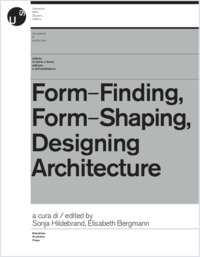Pensare in piccolo per costruire in grande : teoria, prassi e cultura del modello in scala ridotta nella ricerca della forma strutturale nel 20. secolo
- Neri, Gabriele Accademia di architettura, Università della Svizzera italiana
-
2015
Published in:
- Form-finding, form-shaping, designing architecture : experimental, aesthetical, and ethical approaches to form in recent and postwar architecture = approcci sperimentali, estetici ed etici alla forma in architettura, dal dopoguerra ad oggi / Hildebrand, Sonja ; Bergmann, Elisabeth. - Mendrisio : Mendrisio Academy Press. - 2015, p. 33-47
Architectural models
Architecture
Buildings
Structures
Modelli architettonici
Architettura
Edifici
Strutture
English
For many twentieth-century designers, the reduced-scale model represented an essential device for defining and controlling structural forms — one need only think of the work of Arturo Danusso, Pier Luigi Nervi and Sergio Musmeci in Italy; Eduardo Torroja in Spain; Heinz Isler and Heinz Hossdorf in Switzerland; and Frei Otto in Germany, etc. In addition to technical variations associated with the choice of material, scale and task, it is possible to identify two main approaches behind the experiments conducted with these models. On the one hand, the model was initially regarded as a device that was useful for checking the precision of a structural form that had already been conceptually defined; while on the other, many designers found that the modelling process was a perfect way of finding or determining the form of a structure. When these two different perspectives – which in fact include countless nuances and connections – are analysed, many questions emerge, especially in relation to the ‘structural architecture’ of the last 50 years, in which the physical model has gradually been replaced by new methods and new devices.
- Language
-
- Italian
- Classification
- Architecture
- License
-
License undefined
- Open access status
- green
- Identifiers
-
- RERO DOC 306988
- ARK ark:/12658/srd1318808
- Persistent URL
- https://n2t.net/ark:/12658/srd1318808
Statistics
Document views: 216
File downloads:
- PDF Editoriale: 315
